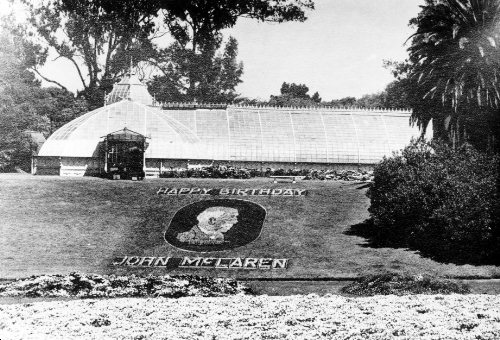A biweekly newsletter with public space news, resources, and opportunities.
A curated dispatch on all things public markets plus the latest announcements from the Market Cities Program.
Please note that these Hall of Shame nominations were written in a moment in time (most over a decade ago) and likely have since changed or even been transformed. If the above entry is now great, or still not so great, go ahead and comment below on how it has evolved or nominate it as a great place.

317 acres of wild open space within San Francisco's city limits provide habitat for a variety of natural and endangered species - including happy urbanites.

A great escape in an urban setting.
McLaren Park borders two of San Francisco's supervisory voting districts and six distinct neighborhoods. Two roadways allow transit through the park for autos and a public transportation line. Three surrounding public transportation lines provide access to the perimeter of the park.
Seven-and-a-half miles of paved and well maintained hiking and biking trails carrying visitors through every part of the park. An assortment of unpaved, natural trails allows access to the more remote and wild areas of the park. The varied terrain, rising to a height of 519 ft. above sea level, makes the park visible to more than 50% of San Francisco residents and provides spectacular views of the San Francisco Bay Area and the Pacific Ocean.
First-time visitors are invariably awed by the park's natural ambiance, and leave in disbelief that it exists in such a dense urban setting and that such a large and dense park can be so clean and well maintained. Locals and regulars aspire to the day when the park is taken off the map so that they can enjoy its serene beauty and numerous amenities by themselves.
The types of visitors that come to John McLaren Park vary according to time of day, day of week and individual interests. Early morning visitors come to enjoy the view of the rising sun and the evaporation of the fog surrounding the crowns of tall trees. Evening visitors come to find peace in vistas of the sun setting on the horizon of the Pacific Ocean. Midday visitors, on the other hand come to marvel at the spectacular vistas of downtown San Francisco, San Francisco Bay or the entire East Bay seashore.
The more passive recreational visitors come to enjoy the remote serenity, to stroll around two bodies of water or to picnic at 75 designated and furbished sites throughout the park. More active recreational visitors come to hike the trails, golf on the nine-hole course, play tennis on the park's seven courts, play baseball on its three diamonds or swim at its pool. Children come to enjoy the park's four playgrounds or play soccer on its mini field. During the summer and fall, aficionados of the arts come to enjoy musical and theatrical performances staged in the park's 1000-capacity amphitheater - a unique feature in San Francisco. Visitors who want to avoid the hubbub of recreational activity can escape to the park's southern slopes to enjoy the quiet within the habitat of trees and birds.
McLaren Park attracts a broad range of ethnic visitors from the numerous neighborhoods that border the park. It is a popular destination for Tibetans, who chant in celebration of the rising sun in the early morning. Buddists come to praise under trees situated in quieter, more remote parts of the park. Tai Chi clubs perform their meditative exercises in the park's peaceful meadows.
In midday, naturalists with varied inclinations (bird watchers, florists, ecologists) come to discover McLaren's surprises. Numerous indistinguishable urbanites arrive in the early morning and late evenings to exercise themselves and their pets - all of these in perfect harmony with their fellow visitors. None choose to boast of their space lest it be lost to the crowds.
McLaren Park was named after John McLaren, the superintendent of Golden Gate Park from 1887-1943. Its 317 acres include natural areas rich in native plants and animals, lawns and planted gardens, as well as transition areas between the two.
The site of McLaren Park was once part of two ranchos granted by Governor Alvarado in 1840 when California was a part of Mexico. Four homestead associations formed in the 1860's to promote housing developments throughout the southern portion of San Francisco. The current parkland and the adjacent Portola neighborhood were designated the University Homestead Association and laid out in the traditional grid pattern. Because of the hilly topography and a lack of roads, few lots were sold on what is now McLaren Park; the rest of the land remained farmland, greenhouses and gardens. The highest and most hilly areas remained undeveloped.

*Please note that these Hall of Shame nominations were written in a moment in time (most over a decade ago) and likely have since changed or even been transformed. If the above entry is now great, or still not so great, go ahead and comment below on how it has evolved or nominate it as a great place.